Brian Meert's Blog, page 70
June 4, 2020
The Pros and Cons of Instagram Pods

JUN. 4, 2020
A Rival IQ study published in 2019 showed that except for higher education, engagement rates dropped from a median of 1.73% to 1.60% across all industries. With engagement rates in a slow decline, it’s tempting to join Instagram pods, which offer a fast and easy way to increase likes, comments, and follows.
 Photo courtesy of Rival IQ
Photo courtesy of Rival IQShould you or shouldn’t you? Some marketers may vehemently advise against joining Instagram pods while others may encourage you to participate with caution. Here, we’ll explore the benefits and drawbacks of joining these controversial groups to help you in your decision.
Instagram Pods, Explained
Instagram pods are social media groups or private chats that allow you to participate in like-for-like, comment-for-comment, or follow-for-follow activities. You share an Instagram post to the group, and members will like or comment in exchange for the same type of engagement. Often, these groups have a strict no-mooching policy: If you join the group to receive, you must give in return. Otherwise, you will be booted off the platform.
Instagram pods operate in secret through private message groups and Facebook groups. Usually popular, they attract hundreds of members. The IG Engagement Space group, for example, has 31,000 members to date.

Attitude Toward Instagram Pods
Although thousands of Instagrammers use engagement pods, not all Instagram users see them as beneficial. President and Founder of Quinn Social Media Management Roberto Quinn, for example, doesn’t find pods to be helpful:
Personally, I’ve not found pods to be particularly helpful. Large pods help certain posts receive an influx of engagement but from my experience, it’s rare to see a significant increase in follower count. By nature, they’re also incredibly impersonal, which makes the engagement noticeably impersonal.”
However, Quinn does recognize that certain pods, particularly smaller ones, can be helpful to small businesses.
Niche pods, or smaller pods, I’ve found to be great for small business accounts or niche markets. A great example would be a group of local businesses banding together to support one another’s efforts through social media.”
Of course, there are other ways to grow your Instagram account. Quinn prefers building authentic relationships.
I’m not saying that pods can’t work for you, but that perhaps the time and energy could be better allocated. Spend the time researching, finding like-minded accounts, and developing real relationships. Not only will your engagement be richer, you may end up finding great people to collaborate and grow with.”
The Pros of Joining Instagram Pods
Of course, it’s important to weigh the benefits of Instagram pods before deciding whether you should or shouldn’t join. These are the benefits.
1. You Can Rapidly Increase Engagement
Joining Instagram pods is an effective way to increase your engagement. With strict no-mooching rules enforced, people are required to reciprocate.
2. You Can Increase Your Followers
Instagram pods also allow users to participate in follow-for-follow threads, in which members follow participating members’ accounts. This activity will help you quickly gain followers.
3. You Can Appear on the Discover Feed
Rapidly gaining a heavy influx of engagement will propel your post to Instagram’s Discover feed. A spot on Discover increases your reach and provides potential for gaining followers and engagement.
4. You Can Gain Loyal Followers
It’s possible that some of the hundreds of members that visit your account will turn into loyal followers. That is, of course, if they enjoy the content you post.
5. You Can Gain Strong Support
As Quinn previously mentioned, some pods can be beneficial to certain accounts. Niche pods, in particular, can provide value to small businesses. According to Quinn, it’s possible to create strong support and lasting relationships with the people you’ve interacted with.
6. You Can Make Connections
Participants of Instagram pods are often eager to grow their accounts. You can build connections, even proposing collaborations with fellow pod members.
The Cons of Joining Instagram Pods
It’s also important to weigh the drawbacks of Instagram pods before joining. Here are some downsides to consider.
1. Not Everyone Reciprocates
Although Instagram pods have a strict no-mooching rule, not all admins enforce it. Many Instagram pods have thousands of participants, so it can be difficult to catch violators. Some pods do have call-out threads that list the names of violators, who are consequently booted off the group.
2. You Can Never Leave
Maintaining the same level of engagement requires you to stay. When you leave your pod, your engagement will drop significantly, which may be jarring to followers. After all, it’s strange to see your engagement go from the hundreds to double digits.
3. Most Followers Won’t Engage with Your Posts
Although Instagram pods create follow-for-follow threads, most of the followers you gain won’t engage with your content since they followed out of obligation, not because they enjoy your content.
4. Participation Is Too Time Consuming
You are required to reciprocate the efforts of every member who engages with your post. Depending on the size of the pod, you may sometimes need to engage with a hundred posts, which takes up a considerable amount of your time.
5. Pods Are Against Instagram’s Policy
Because the platform values authenticity, Instagram has made efforts in curbing inauthentic behavior, including purchasing fake followers and engagement. Joining Instagram pods is no exception. Although pod members are savvy enough to circumvent the system, gaining fake engagement and followers does come with risks.
6. You’re Forced to Like Bad Content
Since reciprocation is required, you will sometimes be forced to like or comment on bad content. This may be difficult if you’re, for example, forced to like a post with sentiments that you don’t believe in, with messages that you find offensive.
7. You Won’t Receive Quality Engagement
Since members are commenting artificially, you won’t receive thoughtful engagement. Roberto Quinn says it well:
Too many businesses and individuals want to receive timely and quality engagement, but they don’t put in the work to provide quality engagement. What you’re left with are accounts full of ‘OMG great post, love it!’ The biggest thing to remember is that everyone in these pods are there to, first and foremost, serve themselves.”
Instagram Pods: Should You or Shouldn’t You?
Instagram pods have their benefits and drawbacks. Before joining, weigh the pros and cons. Take into account your long-term goals and schedule when making a decision. Different people will give you different advice — it’s up to you to decide.
By Anne Felicitas
The post The Pros and Cons of Instagram Pods appeared first on AdvertiseMint.
June 3, 2020
How to Mass Delete Old Facebook Posts

JUN. 3, 2020
 Ujesh / Unsplash
Ujesh / UnsplashYou might have heard this warning before: Be careful what you post on the internet. This ominous message doesn’t stem from paranoia. The world wide web serves as a permanent record of your online behavior, so you best be cautious. How many times have you heard of politicians or celebrities being slammed for an old video, image, or Tweet that didn’t age well? Exactly.
You likely have old, embarrassing Facebook posts that you’re eager to obliterate from the face of the earth. Fortunately, the social media company recently rolled out a feature that allows you to delete or archive posts from the past. Using the filter tool, you can easily retrieve and eliminate posts from as early as 2008 — no need to painstakingly scroll through your Timeline, hunting down those pesky drunken status updates from 2012.
Although currently available only in the app, Facebook will release the new feature to desktop in the future. Here’s how to delete old Facebook posts.
Step 1: Click the three-lined icon from the upper-right corner of your screen. Click “Settings & Privacy.”

Step 2: Click “Settings.”

Step 3: Scroll down to “Your Facebook Information” and click “Activity Log.”

Step 4: Click “Manage Activity.”

Step 5: Click “Your Posts.”

Step 6: Click “Filter” to filter your posts by category, people, or date.
Category: Filter by posts, text updates, check ins, photos, videos, or posts from other apps.
People: Filter by posts in which specific people are tagged or posts by other people in which you are tagged.
Date: Filter by date range.

Step 7: Select embarrassing posts to either delete or archive.
Deleted posts will stay in your trash for 30 days. Afterward, they will be removed forever. When you archive a post, it will no longer be visible to your friends, but it will still be accessible to you. You can find all of your archived posts in the Archive tab of Manage Activity.

There you have it, folks. An easy way to — finally — mass delete old, embarrassing posts on Facebook.
What Else Is New with Facebook?
Facebook is constantly adding to and improving its products. In case you missed a few of the updates, here’s a recap to keep you up to speed.
Facebook Desktop Redesign
That’s right. The social media company is testing its new design for desktop. A change announced at the 2019 F8 conference, the new Facebook features larger font, rearranged tabs, dark mode, and a more sterilized look, abandoning its signature Facebook blue for a white theme. The new design is still in beta, so not all users have access. Users who do have access can switch to Facebook classic.
Facebook Shops
Facebook also rolled out Facebook Shops, a feature in the app that allows you to sell products without redirecting customers outside of Facebook. This feature is also available on Instagram.
New Workplace Features
Facebook’s office counterpart, Workplace, is releasing new features that help employees work efficiently. In an email announcement to AdvertiseMint, Facebook announced that Workplace now has integration with tools such as Google Drive and Dropbox, roles, new controls for Groups, and safety tools.
Virtual Dates
A new feature in Facebook Dating allows you to go on a virtual date via video chat. Chats don’t contain participants’ last names to protect their privacy. Participants are also required to send a video request to go on a “second date.”
WhatsApp Group Call
Facebook-owned WhatsApp is rolling out a feature that allows you to video chat with up to eight participants.
Messenger Rooms
Messenger Rooms is a Zoomesque feature that allows you to video chat with a large group from your desktop or mobile device. Much like Zoom, you set up a room ahead of time and send people the link from which they can join. Yes, even people who don’t have a Facebook account can join the call.
Online Events
Online Events allows you to create, organize, and schedule Messenger Room and Facebook Live events. It’s just like the regular Events feature on Facebook but used specifically for gatherings you’re hosting on Messenger Room or Facebook. However, with this feature you can charge guests to attend.
By Anne Felicitas
The post How to Mass Delete Old Facebook Posts appeared first on AdvertiseMint.
June 1, 2020
Facebook’s Redesign Is Here. This Is What It Looks Like
JUN. 1, 2020
At last year’s 2019 F8 conference, Facebook CEO Mark Zuckerberg dropped a big bomb: Facebook is abandoning its signature blue theme in favor of a more sterilized look. It seems that this redesign is coming to users’ web browsers soon.
Facebook is currently testing the new website, and its appearance can be a little shocking to long-term users accustomed to the old design. The new Facebook is just as Zuckerberg described: the theme is white rather than blue, with certain features rearranged to make friends central to the experience.
The New Home Page

In the new design, Stories appear above the What’s On Your Mind bar. This is likely an attempt to bring more focus to the feature, which hasn’t gained the popularity that its counterpart, Instagram Stories, gets. The new design also puts the focus on Facebook Watch, Marketplace, Friends, and Instant Games, which appear as tabs on top of the Stories carousel.
The new Facebook also has a reshuffled left column, with Friends, Messenger, and Groups appearing first, then shortcuts (recently visited pages) second. This reshuffling is in line with the focus on friends, since the first four tabs help users connect with their contacts. Of course, in tune with the times, the COVID-19 Information Center appears on top of these tabs, although once the pandemic is over, it will likely be removed.
Interestingly, the new right column features ads first, birthday alerts second, then contacts third. Prioritizing ads is likely an attempt to bring more attention to Right Column Ads, which can be easily overlooked by users whose eyes are trained on their feeds.
Hello, Dark Mode
Dark mode is a nice addition to the new design. This feature turns the background from white to black, for a more comfortable viewing at night.

You can turn dark mode on and off on Facebook by clicking the upside-down triangle on the upper right corner of the screen, and clicking on “Dark Mode.”
When the new design has rolled out to you, you will also get the option to switch to dark mode. Again, you can change your settings any time.
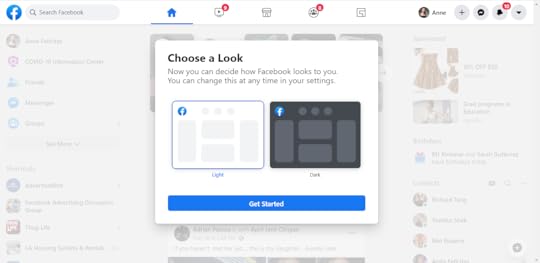
Switching to the Old Facebook
If you find the new Facebook to be an abhorrent mess, you can switch back to the old design by clicking on the upside-down button from the right corner and clicking “Switch to Classic Facebook.” Since the design is a test, not an official roll out, you will be asked to provide feedback on why you decided to switch to the old design.
[image error]
It’s unclear whether the classic design will always be available, but it’s entirely possible that once the new look rolls out to everyone, Facebook will slowly phase out its old interface.
What Else Is New with Facebook?
Facebook has a penchant for rolling out updates nearly every month, so of course the redesign isn’t the only change it has in store. Last week Facebook rolled out Shops to its app and to Instagram. This new feature allows merchants to sell their products on the Facebook and Instagram apps. (Users can purchase without being redirected to a website or landing page.)
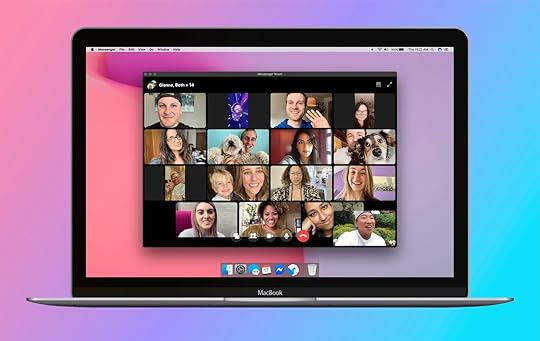 Image courtesy of Facebook
Image courtesy of FacebookIn a Facebook Live broadcast in April, Zuckerberg announced a slew of features coming to users, including Virtual Dates, a feature on Facebook Dating; end-to-end encrypted, eight-participant group call on WhatsApp; Video Rooms, a rival to Zoom; and Online Events, which allow hosts to charge users per session.
By Anne Felicitas
The post Facebook’s Redesign Is Here. This Is What It Looks Like appeared first on AdvertiseMint.
May 24, 2020
12 Ways to Become TikTok Famous

MAY 23, 2020
 Aaron Weiss / Unsplash
Aaron Weiss / UnsplashSo you started a TikTok. Welcome to the club! Still, picking up a new hobby during this lonely and boring time of quarantine isn’t enough for you. No, you want stardom. You want to be TikTok famous.
You can gain a large following on TikTok and become popular enough to be considered a TikTok influencer, earning hundreds — even thousands — per post. But let’s not get ahead of ourselves. Before you can claim your fame (and influencer money), you must first learn how to become TikTok famous by getting more views, likes, and follows. Here’s how you do that.
Record with Trending Audio or Song
Audio tracks are the heart of TikTok videos. Most of the TikToks you see feature users lip-synching to a popular song, dancing to a trending tune, or acting out skits to viral audio. Although the app offers a repertoire of sounds that you can use for your recording, you will reach a wider audience and increase engagement by creating a video that features a popular song or audio. For example, Actor Adam Rose’s “The Woah” track went viral, spawning more than 36,000 copycat videos. The Weekend’s song, “Blinding Lights,” also went viral.
Use Trending Hashtags
TikTok hashtags increase your videos’ reach. However, it’s important to choose the right hashtags. Any ol’ hashtag won’t do: It should be relevant to your video. If you’re posting a “Say So” dance, include #saysochallenge. If you’re posting a comedy skit, use #funny. Look at the hashtags creators are using for the same video. If you’re posting a hair tutorial, find the top-performing videos for that niche and copy the hashtags.
Hijack Popular Hashtags
You should also hijack trending hashtags, even if they’re not quite related to your video. With this strategy, you can catapult your video to TikTok’s Trending feed.
This Marilyn Monroe dance, set to the tune of “Diamonds Are a Girl’s Best Friend,” includes several unrelated trending hashtags: #shareyourplaylist, #dancechallenge, #keepingitbusy, and #bringitback. Although the video has nothing to do with sharing a playlist or dance challenges, it garnered more than 8,000 views — impressive for an account that averages 200. The account also received more than 200 followers after publication.

Sure, including relevant hashtags may be important, but hijacking trending hashtags can significantly increase your reach and engagement.
Recreate Trending TikToks
TikTok is all about trends. That’s why you’ll find multiple videos of the same kind appearing on your “For You” page. When a video goes viral, TikTok users quickly post recreations. If you want to get noticed, you have to hop on trends. You will gain more likes by posting videos that have proven to be a hit with TikTok audiences.
Often, specific skits and dances go viral, but so do audio and popular songs. The song and choreography to “Say So,” for example, was a huge success on the app. At the time of writing, the total views for the hashtags #sayso and #saysochallenge are 778 and 246 million, respectively. If you see a song, dance, or skit gaining traction, create your own version.
Duet or Collaborate with a Famous TikToker
Collaborating with famous TikTokers is the fastest way to gain fame. You will reach not only your loyal subjects but also the fans of that famous user. If you’re collaborating with someone who has two million followers, you gain access to two million pairs of eyes. This may be the fastest method, but it’s certainly the most difficult. Of course, not everyone knows an influencer with two million followers. Start small and expand your network. Even a TikToker with 1,000 followers is valuable.
If you have absolutely zero connections, create a duet. Duets are available to everyone, even to TikTok users whom you don’t follow (if that’s the privacy setting you choose). When collaborating, tag the creator and use the appropriate hashtags to increase your reach.
Stay Consistent with Your Theme
Users will follow you because your content aligns with their interests.
Choose a theme and stay consistent. If you’re passionate about dancing, post dance videos. If you’re a professional chef, post cooking tutorials. TikTok user Christian Delgrosso, for example, posts exclusively funny skits.

Don’t stray from your theme too often — you may lose your followers. Of course, you can still explore other themes, as long as you remain consistent. If your feed is too eclectic, you won’t get the loyal followers you need.
Don’t Sacrifice Video Quality
TikTok videos are nothing like the Instagram Stories you see. While Instagram videos are an intimate behind-the-scenes style of authentic content, TikToks are highly produced, often featuring special effects and complex edits. If you want to stand out on the platform, you have to be uncompromising with aesthetics — make sure everything looks good before you post, even if this means recording several takes before settling with the final video you want to publish.
Camera quality matters — grainy videos won’t succeed on the platform — and so do lighting and audio. Make sure you record in a well lit area, and make sure the audio you use is loud, crisp, and clear. Make no mistake — users have no problem leaving derisive comments on your videos if they see something sub par. See the user’s comment below as evidence.

Participate in Hashtag Challenges
Occasionally, a brand will create a hashtag challenge. TikTokers participate by creating a video that responds to the challenge and using the brand’s special hashtag for the occasion. A recent campaign is the #scoobydoochallenge, in which users mimicked the Scooby Doo dance. By the end of the campaign, the hashtag garnered seven million views. Joining hashtag challenges can improve your reach. If the contest managers enjoyed your video, they may even feature you.
Create an Original Track
Although TikTokers mimic dances and skits to the same music and audio, many users also record original sound. A classic example is the “Bored in the House” song, created by TikTok user @curtisroach. The song went viral, garnering 5.5 million likes and 27.5 thousand comments at the time of this writing. Curtis Roach gained so much popularity that TikTok verified his account. TikTokers will share and use original tracks that they love. With enough traction, your track can go viral and remain on the app’s Trending feed for weeks.
Post Regularly
TikTokers are less likely to follow a dead account. Seeking entertainment, they expect a steady stream of videos to appear on their feeds. Post regularly to keep your followers interested. TikTok is rich with content. It will be easy for you to ideate, create, and publish short videos each day.
Comment on Popular Videos
If you want to increase your followers, comment on popular videos. Since these videos garner thousands — even millions — of views, your comment can attract the eyes of several TikTokers who might be interested in visiting your profile. If they like what they see, they may even follow your account or engage with your videos.
Share TikToks on Instagram
TikTok allows you to post your videos to Instagram Stories. This is a great way to expand your reach and move followers to your account. TikToks posted on Instagram contain your handle, so followers can visit your profile.
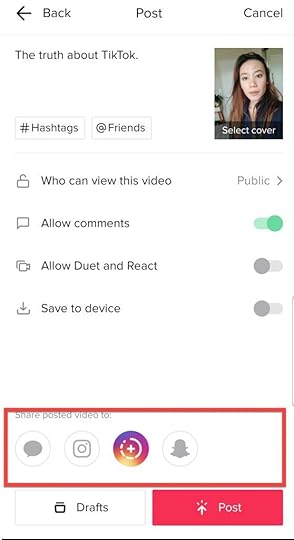
There are so many ways to gain fame on TikTok, but keep in mind that you won’t become a sensation overnight. Develop great content, cater to your audience, and have patience. Those followers will come.
By Anne Felicitas
The post 12 Ways to Become TikTok Famous appeared first on AdvertiseMint.
May 22, 2020
TikTok Advertising: Here’s What the Self-Serve Ad Platform Looks Like
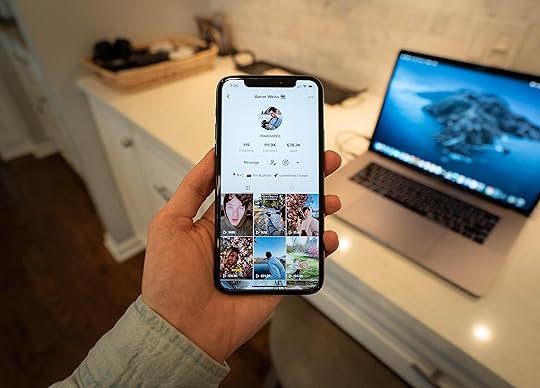
MAY 22, 2020
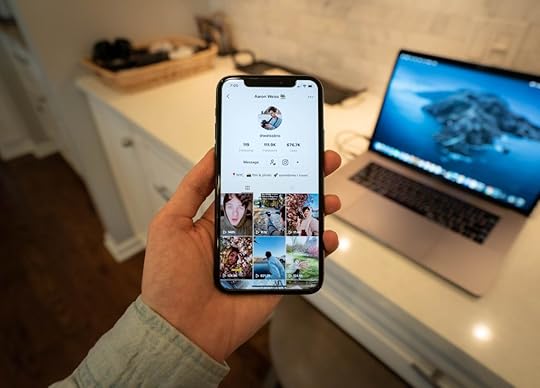 Aaron Weiss / Unsplash
Aaron Weiss / UnsplashAs TikTok grows into popularity, so does its potential for advertising. After all, the more users, the bigger the audience for ads. The social media app is following behind the footsteps of its competitors by developing a self-serve ad platform, reminiscent of Facebook’s Ads Manager.
This week TikTok has been granting access to its self-serve advertising platform. In an email invitation to AdvertiseMint, TikTok announced that the platform is currently opening to select advertisers in the United States.
The platform, called TikTok Ads, looks and functions similarly to many social media advertising dashboards. If you’re experienced in Facebook, Snapchat, or LinkedIn advertising, you can easily master TikTok Ads. Like its competitors, the platform contains a campaign, library, and reporting tab. It also has tabs for billing and payments.
If you’re interested in running TikTok ads, you can sign up here.
TikTok Advertising Dashboard
TikTok’s dashboard contains a summary of your campaigns’ performance. You’ll see charts on trends, placements, spend, among other insights. The dashboard gives you a broad view of your overall campaign performance while the reporting page (more on that later) shows you specific metrics from specific campaigns.
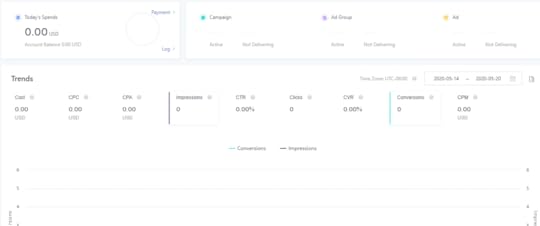
TikTok Advertising Objectives
TikTok currently only has three objectives: traffic, conversions, and app installs. This list pales in comparison to Facebook’s impressive repertoire, but since TikTok is new to advertising, it’s safe to assume the social media company will roll out more objectives in the future as its platform develops.

TikTok Advertising Buying Options
Much like Facebook, TikTok advertising is an auction, where you bid for a spot on the app. You can set your budget to either lifetime or daily (the minimum amount is $50). Alternatively, you can click “No Limit.”
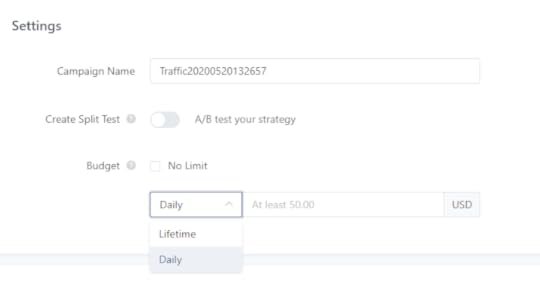
TikTok Advertising Levels
TikTok campaigns are organized in three levels: campaign, ad group, and ad. It appears as though “ad group” is equivalent to “ad sets” in Facebook Ads Manager. You can create and edit ads directly from each level.
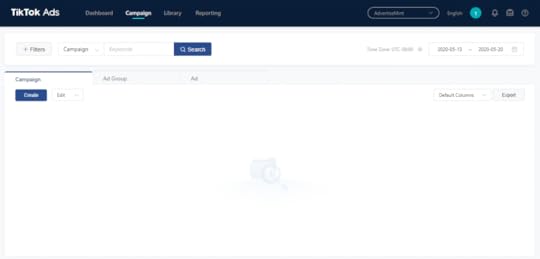
TikTok Advertising Reports
You can analyze the performance of your ads by going to the “Reporting” tab. There, you can view metrics related to video play, in-app events, attribution, page events, and cost per clicks.
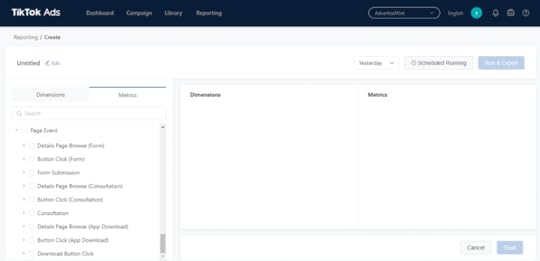
TikTok Advertising Library
TikTok’s library contains creative and ad assets. There, you will find your audience uploaded to the system, app pixels, and creatives (images and videos).
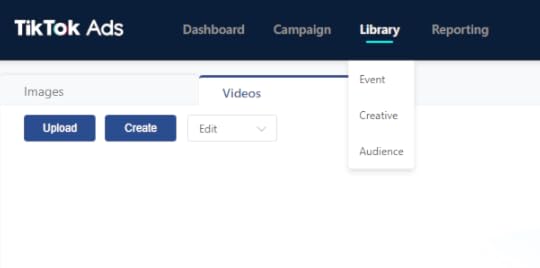
There may not be much on TikTok’s self-serve ad platform, but keep in mind that TikTok advertising is new. The company will roll out more tools and features in the future as it develops its service.
As aforementioned, not everyone has access to the platform, but if you’re interested, you can apply for a reservation now.
By Anne Felicitas
The post TikTok Advertising: Here’s What the Self-Serve Ad Platform Looks Like appeared first on AdvertiseMint.
May 21, 2020
Dos and Don’ts of Marketing During the COVID-19 Pandemic

MAY 20, 2020
 Will Francis / Unsplash
Will Francis / UnsplashThere isn’t any area of life that the COVID-19 pandemic hasn’t impacted, and marketing is no exception. Some advertisers and social media platforms have specifically “outlawed” coronavirus-related content, causing brands to scramble if they originally planned to write about, report on, or otherwise share COVID-19 information. An example of this is Facebook’s recent ban of certain coronavirus ads and posts.
There are some new marketing techniques that have emerged due to the pandemic, and you may want to adopt them for the time being — or even for good. This article goes over a number of dos and don’ts of marketing during the COVID-19 pandemic.
Do Be Aggressive with Digital Marketing
It’s common for brick-and-mortar stores to combine digital marketing with old-school, in-person marketing tactics. Now that many businesses are shut down temporarily, they’ve had to shift most everything online. The limited digital marketing strategies employed up until now won’t cut it — you need to do more than you ever had to if you want to maintain online sales and compete with all the other businesses doing the same thing. Amp up your social media marketing, ad budget, or blog.
Don’t Make False Claims About COVID-19
Social media outlets, Facebook in particular, have had a rocky relationship with fake news for the past few years. Assume that any content that makes false claims or spreads conspiracy theories will be banned. Facebook is handling misinformation by working with fact-checkers and limiting distribution of false news.
Do Be Clear About What You’re Currently Offering
Your customers want to know how they can access your business even if your doors are currently closed to the public. Update your social media profiles, website, and business listings (like Google My Business) with the latest information. Make sure your hours of operation are accurate; let people know if they can shop online; announce that your restaurant is offering delivery or pickup — don’t leave any question unanswered.
Don’t Post Listings for Face Masks (or Other Virus-Related Products)
You may assume that any face mask promotion is a positive thing — after all, people are scrambling to get face masks so they can stay safe in public. However, due to price gouging (raising the cost of an item to an abnormal level when in demand) on e-commerce sites such as Amazon and eBay, listings for face masks are no longer considered reputable on certain platforms.
Face masks aren’t the only product type getting this treatment. Facebook has banned ads and listings for various coronavirus-related products, like disinfecting wipes, hand sanitizer, and virus testing kits. Toilet paper can’t even make an appearance on some platforms because advertisers are concerned about price gouging.
Do Plan Online Events
If you had any type of event planned for 2020, consider holding it online instead of canceling or postponing. Some online events have an entry fee while others that were originally selling tickets are now free for anyone who wants to attend. Online events can do a lot more than open an income stream — they’re also a great way to promote your business, connect with customers, learn what your audience wants, and increase brand awareness. In a lot of cases, it’s better to hold a scheduled event now rather than hope that you can do it live at some point in the future, especially if the event is timely or won’t have as much of an impact later.
Don’t Post Exploitative Content
Since it’s so difficult to monitor ads and posts for exploitative content, some advertisers and platforms are banning anything with the words “coronavirus” or “COVID-19.” Some may even veer away from content with related words and phrases, like “quarantine” or “social distancing.” The concern is some of this content may be inciting urgency for financial gain, such as claiming that a product can prevent catching the virus or that an item is about to sell out for good.
Do Make it a Point to Improve the Customer Experience
At a time when your company may be losing business and revenue, it seems counterintuitive to offer discounts and freebies. However, doing so shows that you’re completely in tune with what your audience (and society in general) needs right now: a break. Income is dropping all over the country, and consumers have less money to spend. Giving discounts, slashing prices, and offering deals such as free shipping or a free month of subscription goes a long way. You may attract new customers when the price tag is low and retain them when life goes back to normal, whatever the new normal will be.
Don’t Forget to Add a Disclaimer to a Political Ad
Although political ads are allowed on Facebook even if they relate to COVID-19, they have to include a disclaimer. Public service announcements (PSAs), on the other hand, don’t usually require a disclaimer. However, there’s a list of elements that would still require a PSA to include a disclaimer. You can see the full list here to make sure you’re meeting the requirements.
Final Thoughts
Every business has had to redefine its strategy for the foreseeable future. From setting up employees to work from home to determining the best way to market to consumers in a time when everyone is quarantined, brands have a lot on their plate. Knowing what marketing strategies to utilize — and which ones to avoid — will pay off. Also, keep in mind that strategies established now may continue even once the pandemic has passed. A lot of companies are finding new ways to connect with customers that will work in the future, whether or not the threat of COVID-19 is present.
By Lindsay Pietroluongo
The post Dos and Don’ts of Marketing During the COVID-19 Pandemic appeared first on AdvertiseMint.
May 20, 2020
How to Sell Products on Facebook and Instagram Shops
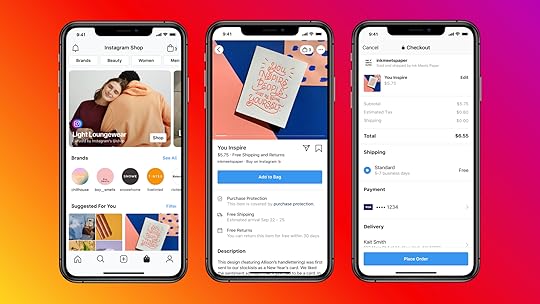
MAY 20, 2020
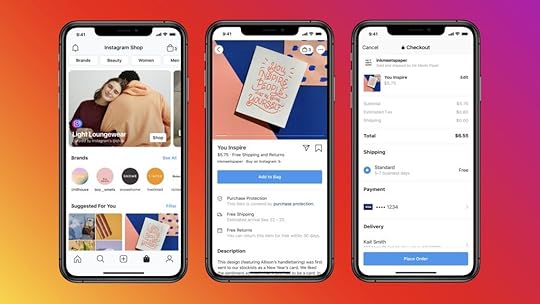 Photo courtesy of Facebook Business
Photo courtesy of Facebook BusinessFacebook launched two new features that allow retailers to sell their products: Facebook Shops and Instagram Shops.
Facebook Shops, also available on Instagram, is a place where retailers can create an online store for free and where customers can purchase from their product collections. Each collection contains a name, description, cover media, and 6 to 30 products, which can be organized according to themes. Customers can view product photos full screen and shop for items without leaving the Facebook or Instagram app.
Retailers can answer questions and offer support through WhatsApp, Messenger, and Instagram Direct. They may also be able to integrate their e-commerce platforms to the Shop, since Facebook is currently working with sites such as Shopify and BigCommerce to help retailers sell their products. Facebook is also planning to add more features to Shops, including live shopping and loyalty programs.
Facebook is slowly rolling out Facebook and Instagram shops, which are not yet available to all users. Eligible retailers — businesses with linked Facebook page shop and Instagram profile — will receive an email or notification letting them know Shops is now available to them.
Customers can access Shops from Facebook pages, Instagram profiles, and Instagram Stories.
To create a Facebook or Instagram shop, users must have a Commerce Manager account and a collection of products.
What Is Commerce Manager
Commerce Manager is a platform that allows you to sell products, manage inventory, and fulfill orders. To use this feature, you must have a store on Shopify, BigCommerce, Channel Advisor, CommerceHub, Freedonomics, ShipStation, Quipt, or Zentail. With Commerce Manager, you can also do the following:
Upload inventory Sell products with purchase protectionGet customer insightsGet tips on growing your salesView all past, pending, and shipped itemsView payment balanceContact support
To create a Commerce Manager account, you must have the following documents:
A Federal Tax Identification NumberA State Tax Registration NumberYour bank account informationYour physical business address and email addressBusiness category, type, and nameA business representative name, SSN, and DOBShipping options, return policy, and customer service email
How to Create a Collection in Commerce Manager
You can create your shops in Commerce Manager. If you’re setting up a shop on Facebook, you must meet the following requirements:
You must be an admin of the page connected to your existing Facebook page shop.You must be a Business Manager admin.You must manage your Facebook page and catalog in the same Business Manager account.
If you’re setting up a shop on Instagram, you must meet the following requirements:
You must be a page admin for the Facebook page connected to your Instagram Business profile.You must be an admin of the Business Manager where you manage your Instagram Business Profile and Facebook page.
To create a collection in Commerce Manager, follow these steps.
Step 1: From Commerce Manager, click “Create Collection.”
Step 2: Add your products and product details, including name, description, and cover media.
Name: The name can contain up to 20 characters, which can include emojis.
Description: The description is optional and can include a maximum of 200 characters.
Cover media: The cover media must have a ratio of 4:3 and a pixel size of 800 x 600.
Step 3: Click “Create Another Collection” to add a new collection or “Customize Your Shop” to add to an existing collection.
Facebook will review your collection to ensure it is compliant to its commerce policies. The review process takes up to 24 hours. Customers can see your collection after approval.
How to Customize Your Shop in Commerce Manager
You can customize your shop layout and style from the Shops tab in Commerce Manager using the Shop Builder tool. This tool allows you to do the following:
Preview changesAdd, remove, and arrange collectionsChoose collection to feature in your shopChange text size and button colorsAutosave changes
Step 1: In Commerce Manager click “Shops.”
The Shops tab is only functional if you have existing collections.
Step 2: Click “Edit” on the shop you want to customize.
Step 3: Go to “Layout” to add collections on the top of your shop or at the bottom of your shop as a carousel.
Step 4: Go to “Style” to edit text size and link and button color.
Step 5: Click “Create Collection” to add another collection.
Step 6: Preview shop and publish.
How to Add a Collection to Your Instagram Profile Shop
If you use Instagram Checkout, you can also add collections from the Instagram app. However, if you haven’t yet created a collection for your shop, you would need to create your first one in Commerce Manager. To add a collection to your Instagram profile shop, follow these steps:
Step 1: Go to your Instagram profile.
Step 2: Click “Edit Shop.”
Step 3: Click “Collections” then “Add.”
Collections on Instagram automatically appear on top of your shop.
Step 4: Click “Done.”
You can unpublish collections from your profile by clicking “Edit Shop” then “Collections” and selecting the collection you want to hide. You can re-publish hidden collections at any time.
The post How to Sell Products on Facebook and Instagram Shops appeared first on AdvertiseMint.
May 19, 2020
How to Keep Your Online Customers During The COVID-19 Pandemic

MAY 19, 2020
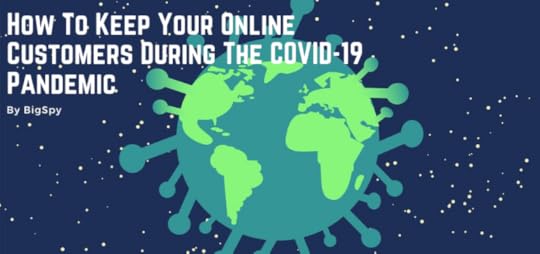 Photo courtesy of BigSpy
Photo courtesy of BigSpyEveryone, both buyers and sellers, is affected by the COVID-19 pandemic. Companies across various industries are experiencing one of the most unprecedented situations while economies are being impacted worldwide.
In light of all this, how can you maintain your client base? By acting on the right strategies, your business can experience some level of success. You can get through this challenging time while retaining your customers. Before delving into the plan of action, you need to re-evaluate the current market.
Business Unusual: The Economic Landscape During COVID-19
Since the World Health Organization declared the coronavirus outbreak a pandemic, not only have people’s lifestyles changed, but markets and businesses have seen a turn of events. While some are going through a slump, other enterprises are dealing with a significant rise in demand. For example, more consumers are turning to online shops to get their supplies in a bid to minimize movement. As a result, online retailers are experiencing a rise in traffic. On the flip side, industries like travel and tourism have noted a marked drop in online visits.
However, not all online retailers have increased sales. As expected in a crisis, most purchases are for essentials, such as groceries and household supplies. Supermarkets are even stocking up on such staples in order to meet increasing demand. A different picture is noted among retailers in the clothing industry and outdoor entertainment as they report a fall in demand.
All in all, it’s safe to say that online businesses have more potential during this pandemic. Especially with lockdowns, restricted movements, and caution against close contacts, brick-and-mortar stores are more likely to suffer.
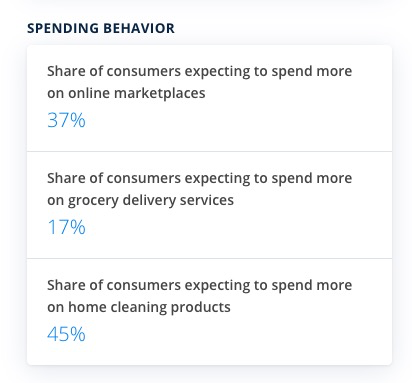 Image courtesy of Statista
Image courtesy of StatistaCheck out some of the recent statistics on consumer behavior in the US:
74.6% of consumers are avoiding shopping in malls and shopping centers.22% of consumers are likely to avoid supermarket visits.55% of consumers are likely to avoid shopping mall trips.
You may be wondering, what’s the fate of your business in terms of customer retention? The good news is you can still take action to reduce the negative impact of this pandemic while keeping your customers.
How to Keep Your Online Customers During the COVID-19 Pandemic
Maintaining your customers now can help save your bottom line and set you up for success after things return to normal. Although the rules and strategies during a crisis may change a bit, one thing remains true: A happy customer is a loyal customer. You must keep this in mind as you reach out to your existing audience.
How can you ensure your customers are happy or at least less anxious during a global pandemic? Here are a few tips to start you off on the right foot.
1. Communicate with Customers
The COVID-19 outbreak has brought uncertainty and unrest. Many are anxious about their health, safety, or job stability. One of the things you can do is frequently communicate the measures your company has put in place to mitigate the impact of the virus. For example, inform customers that you are disinfecting packages for deliveries or offering no-contact drop-offs to ensure their safety. A professor at Harvard Business School explains that the more customers know what’s happening at the back end of your company, the more satisfied they’ll be with your product or services. This is one of the ways to build customers’ trust and loyalty.
Even when business is slow, remain in touch with your customers. Send shout-outs on social media; pass your greetings via email; or use direct messaging to express well wishes for those directly or indirectly impacted by the virus. It’s all about maintaining the relationship.

Apart from empathizing with your clients, your business can serve as a channel through which people get pertinent information. According to a study by communications firm Edelman, businesses are more trusted than governments or the media. Take advantage of this trust by sending your customers updates on current issues the world is facing. There’s a feeling of empowerment that comes with being informed. Your customers will be grateful when you keep them updated.
2. Always Sell Quality
Your situation may vary depending on various factors, such as your niche. Either way, if you are going to sell anything at all, do your best to always sell quality. Most consumers sympathize with brands going through a rough time during this crisis, but that is no excuse to slack off. You cannot be less concerned about the quality of your product or service while still expecting to retain customers. Every buyer still desires to get value for their money.
So what can your business do when faced with challenges like unstable or disrupted supply chains? This is the time to have operations aggressively look for and identify alternative suppliers. If you can do this early enough and avoid being caught off guard, the better for you. Such measures can enable you to deliver the same high-quality products you have always provided for your customers. More to that, you can even end up attracting new customers who may be looking for quality when it becomes harder to find.
Another area to ensure excellence is customer service. Granted, the crisis may result in disruptions even in the productivity and efficiency of your staff, but as soon as you get some form of stability, pursue quality. Exemplary customer care will mean, for example, following up on customers’ requests, responding to queries on time, or enabling smooth cancelations. Whenever the situation allows, meeting deadlines should be prioritized. These are some of the seemingly small things that can set you apart from your competition and help retain customers.
3. Create Attractive Offers
Keep your customers during the pandemic by creating offers. You can win the hearts of your customers, build brand awareness, and promote your products or services by offering something of value at a discounted price or even free of charge. Free trials, online courses, bonuses on purchasing a product, and free subscriptions are some common examples.
This strategy may call for innovation because some offers are not necessarily related to your regular product. For example, companies can give tips and strategies for customers to cope with the challenges brought by COVID-19. You can send emails or post on your social media pages some tips for working at home so your customers can adjust better during lockdown.
4. Invest in Marketing
Marketing your product or service at this time needs to be very strategic. First, focus on existing customers. It’s not only easier but also cheaper. Second, since movement is restricted, use digital platforms like social media. Because consumers will most likely be on social media platforms more often as they pass their days indoors, seize the opportunity to promote your product or service online.
When advertising on social media platforms, make sure to use creatives that grab the attention of your target audience as they browse. Be deliberate in coming up with ad copy that’s ideal for this season. Be compassionate. Avoid exaggerated focus on scarcity, which may add to the stress levels people are already experiencing. We are, after all, in this together.
To come up with brilliant ideas, use BigSpy to find ad creatives for your marketing campaigns. This tool is an advanced search system that allows you to look for ads according to specific keywords, language, country, and several other filters. For example, by searching for ads under the keyword “COVID-19,” you can get relevant creatives that are great for marketing campaigns at this time.
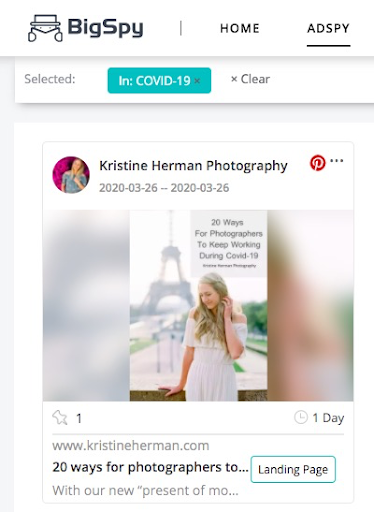 Photo courtesy of BigSpy
Photo courtesy of BigSpyIn the example above, Kristine Herman Photography has created a catchy Pinterest ad to promote her website. The ad copy is very relevant. She also uses a title that captures the current situation of photographers in the face of the health crisis and offers a solution in the form of 20 tips.
Final Thoughts
When you take prompt action on the right strategies, your business can still retain customers during COVID-19. In summary, these are the tips you can begin implementing:
Communicate with your existing clients. Aim for quality at all costs. Surprise your customers with offers and discounts. Don’t hesitate to market your business.
There you have it, actionable points for retaining online customers during the COVID-19 crisis. Stay safe.
The post How to Keep Your Online Customers During The COVID-19 Pandemic appeared first on AdvertiseMint.
May 11, 2020
Increase YouTube Subscribers with These 9 Easy Tricks
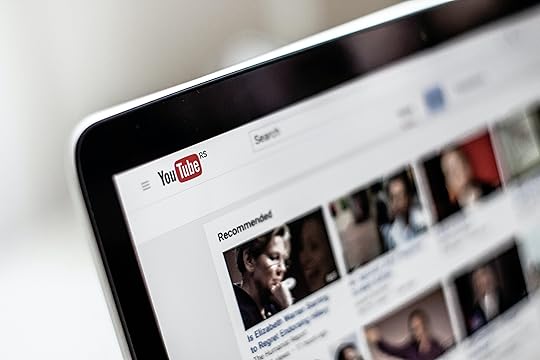
MAY 4, 2020
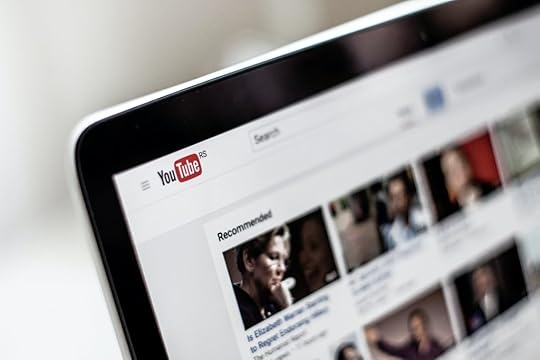 NorWood Themes / YouTube
NorWood Themes / YouTubeWith more than 2 billion users, YouTube is the most popular video platform and second most prevalent search engine. People watch an estimated one billion hours of YouTube videos each day, generating billions of views. Businesses and individuals create YouTube channels to leverage these statistics. The most basic way of harnessing the power of YouTube is to increase your subscribers.
Increasing YouTube subscribers is an excellent way to maximize organic reach, make money, and reach new audiences. However, many channels struggle to attract subscribers, hindering them from achieving their goals. This article comes in handy to outline the nine easy tricks to increase YouTube subscribers.
1. Ask Viewers to Subscribe
At times, you just need to remind your audience to subscribe to your channel. At the end of your video, ask them to hit the big red “subscribe” button after watching. Also, encourage them to turn on notifications for new videos. This way, new subscribers can keep up with your content, increasing your views and subscriptions.
Jimmy Kimmel does it well. After each of his YouTube videos, the LA-based talkshow host asks viewers to subscribe to his channel.
2. Promote Your Next Video
Someone who recently found one of your videos will want more reasons to watch others in the future. Therefore, it is best practice to end your current video by mentioning the next project you are working on. Give your audience a reason they should not miss what’s coming next.
Promoting your next video is a great way to encourage people to subscribe to your channel so they don’t miss out. To succeed in this trick, ensure you work on your content schedule so that you know which video to promote.
3. Partner with Influencers
You can increase YouTube subscribers by partnering with influencers. This is a great strategy because you can reach the influencer’s fanbase, which is likely much larger than yours. Partnering with an influencer means either being featured in that influencer’s video or featuring that influencer in your own. If the influencer is posting the video, make sure to ask to be tagged so followers can easily access your account.
4. Create a Detailed Channel Description
A vague channel description will not get you any subscribers. A detailed and accurate channel description, on the other hand, contributes significantly to YouTube SEO and subscriptions. A good description should explain what your channel is about and provide a strong call to action to subscribe. You can find the channel description by clicking the “About” tab of your YouTube profile.
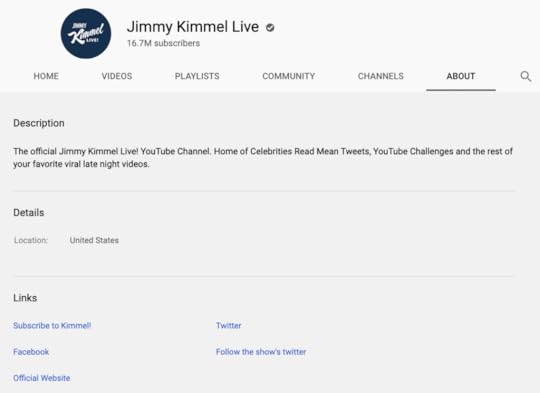 The channel description is located on the “About” tab of your YouTube profile.
The channel description is located on the “About” tab of your YouTube profile.5. Publish Long Videos
This trick may seem to go against conventional wisdom, but it is research-backed. In its YouTube ranking factors research, Backlinko analyzed 1.3 million YouTube videos to determine the primary factors that help videos rank for YouTube’s search engine. The study found something surprising: Longer videos outdo shorter videos in YouTube search results.
With that in mind, you should aim to publish long videos on your channel to attract viewers and subscribers. The average length should be 14 minutes, 50 seconds, according to the research by Backlinko. Any video length above 10 minutes is ideal.
6. Prioritize Quality Over Quantity
I’m sure you have come across this piece of advice, “if you want to grow your YouTube channel, publish videos regularly.” Although the advice is offered in good faith, it can be detrimental when you are not cautious. Uploading many videos to your YouTube channel does not guarantee many subscribers. Quality is king, not quantity. Rather than uploading many videos with no views, focus on quality.
7. Interact with Your Audience
Do not expect your viewers to interact with your channel – even subscribe to it – if you don’t interact with them. Establish a relationship with your audience. It can be as simple as responding to their comments or following their channels.
Notably, a correlation exists between replying to comments and earning subscribers. Replying to comments encourages audience participation, which leads to an increase in fanbase. The majority of YouTubers do not respond to comments. When you develop a habit of replying to comments, you stand out from the crowd.
Interacting with your audience will earn you not only new subscribers, but also free content ideas for your next video. (Ask people what they want to see next in the comments section.) You get plenty of ideas on what to include in your next video that will appeal to your followers.
8. Create a Channel Tagline
In 2019 YouTube had 31 million channels. Why should someone choose yours and not the thousands of others specializing in your niche? The answer is to find ways to stand out from the others. You can do this by simply creating a tagline, which makes it easier for audiences to find your account.
When creating a tagline, start by determining the one thing that makes your channel unique. It should be different from the taglines of competitors in your niche. A tagline like “I help businesses grow” is too common and blends with thousands of other YouTube channels.
9. Promote Your Channel on Other Social Media Platforms
You can increase YouTube subscribers by cross-promoting your channel on other social media networks. Facebook, Twitter, LinkedIn, and Instagram can be good platforms to cross-promote as long as you have an established community of fans. Requesting your Facebook friends and followers to check out your YouTube channel can be a good place to start.
Getting more YouTube subscribers is every YouTuber’s goal. More subscribers mean reaching more people and generating more money. You don’t have to struggle to get new subscribers for your YouTube channel anymore. With the above nine simple tips to increase YouTube subscribers, you are set to go.
The post Increase YouTube Subscribers with These 9 Easy Tricks appeared first on AdvertiseMint.
May 8, 2020
5 Simple Steps to Creating a Successful Brand-Building Campaign

MAY 7, 2020
 Pixabay
PixabayCreating a solid brand strategy is not easy. Almost every iconic company has had a bumpy ride. Founders of Tesla, Apple, and Amazon have likely gone through a fair share of struggle when it comes to branding. Yet, failure is a harsh reality that you can’t shrug off. Even if you have a perfect plan in place, you may fail to structure your brand as per your desires.
It’s highly likely for an innovative and well-researched product to fall flat in the market. According to Harvard Business School professor Clayton Christensen, each year more than 30,000 new consumer products are launched with 95 percent of them failing. Constant product failure leads to termination of the brand.
What Is a Brand?
Customers’ overall perception of your business is called brand identity. Jeff Bezos says it even better: “Your brand is what other people say about you when you’re not in the room.”
Building a brand is a process. Brands do not become famous overnight. It is a steady journey of innovative projects, gradual lead enhancement, and word-of-mouth referrals.
How to Make a Successful Brand-Building Campaign
Trial and error eventually lead to reward. The key is to improve every time a branding campaign fails. This article highlights the five simple steps you can take to ace your branding game.
Define Your Target Market
Appealing to everyone while expecting maximum conversion rate in very little time is one of the biggest mistakes people make when building a brand. Stepping into the market with this mindset brings nothing but failure. A smart move is to identify your target audience. This step helps you solidify your message and craft a sound marketing strategy.
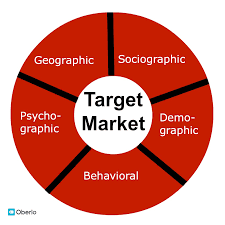 Photo courtesy of Oberlo
Photo courtesy of OberloYou have to evaluate the demographics, likes, dislikes, pain points, expectations, and behavior of your target audience, which you can ascertain by asking the following questions:
What is the location of your target audience?What is your target audience’s perception of your brand?How do you want to change your target audience’s perceptions?Who else is competing for the loyalty of this audience segment?Do you offer any special features?
Determine Your Brand’s Mission
Your brand needs a mission statement, which defines the purpose of your brand’s existence. You can’t build your brand without telling people what it’s about. This statement will guide your brand-building process across all channels. It should be authentic, reliable, and proven. For instance, Apple has aspired “to bringing the best user experience to its customers through its innovative hardware, software, and services.”
Your mission statement must also be clear, focused, specific, and simple. The visual elements of the brand should reflect your mission statement. From the logo to the tagline to the digital flyers, everything must fall in line with the original mission.
In case you lack expertise in designing a logo, it is always better to seek professional help. You can hire a logo design company to revamp the visuals elements of your brand so that they reflect your mission statement.
Research Your Competition
Next, you have to figure out how to look better than the rest. Think about your unique selling point. You have to outline all of the qualities and benefits of your brand compared to competitors. There are four primary reasons to study competitors:
It gives you a better understanding of customers’ expectations.It allows you to understand your shortcomings.It gives you a chance to improve your unique selling proposition.It will enable you to learn from competitors’ successes and failures.
Integrate the information you find into your marketing plan. Tell your customers what they are missing by choosing your competitor’s products or services. You can tweak your product in light of these findings.
Spot Your Value Propositions
A value proposition is a promise of value to be delivered by your products or services. It lets customers know why they should purchase from you, not from your competitors. If you are ineffective in declaring our value proposition, you will end up losing a significant number of customers. In fact, value propositions are so important that 69 percent of businesses-to-business firms have them.
It is extremely challenging to outline your distinct qualities in a concise statement. Your value proposition should be user-centric, engaging, and factual. Some benefits of having a value proposition are the following:
It improves customer engagement and understanding.It attracts the right prospects and increases the quality of leads.It helps potential customers understand what your company offers.It creates a substantial difference between you and your competitors.It provides a clear message.
Come up with an exciting value proposition and watch your conversions grow.
Market Your Brand
Marketing is a tool used to create and maintain demand, relevance, reputation, and competition. You can’t launch a top-notch product and expect it to soar in the market without adequate promotion. It is vital to display your brand on as many channels as possible.
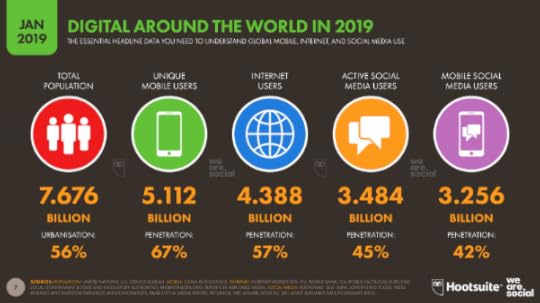 Photo courtesy of We Are Social
Photo courtesy of We Are SocialDigital media offers massive scope for marketing, and you must take advantage of all the opportunities it brings. You have to be creative with the marketing of your brand to expand its presence and reach. For example, you can sell merchandise for your brand by stating its exclusivity or by giving freebies to loyal customers.
Most business owners falsely assume that they will always remain a customer’s favorite because he or she never complains. This is the wrong mindset. You need to find ways to stay at the top of consumers’ minds. Even if you own an established brand, you must prioritize the needs and demands of your customers.
Final Thoughts
Brand-building is a continual process. You can’t design and leave it on its own to work well. Instead, it needs constant monitoring. The first few steps are always hard, but if you learn how to do it right, you will fall in love with the process.
By Evie Harrison
The post 5 Simple Steps to Creating a Successful Brand-Building Campaign appeared first on AdvertiseMint.



